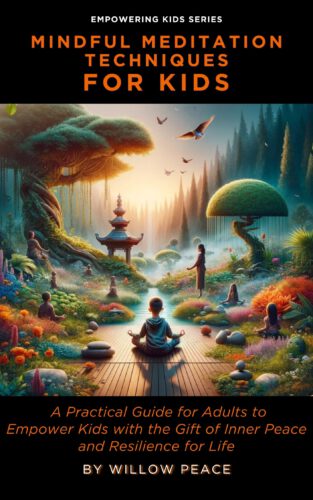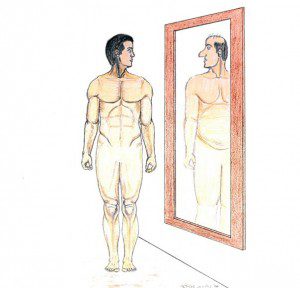Guest Writer for Wake Up World
‘Body consciousness’ is one of the most important topics that can be understood on one’s road to healing. Becoming aware of what kind of relationship you have created with your body is a fundamental key for change. Learning to tune into your inner dialogue offers you space to change.
In this series of articles we will search out and discover the forgotten inner commands that keep the body, mind and spirit in a state of dis-ease. Most of these commands, although quite active, have been tuned out. They have been accepted into the daily consciousness and then they become what many like to call “reality.”
These commands are spoken in many different forms. Some are spoken in the quiet of dawn. Others are shouted at full volume during a mid-day freak-out session. They are born of many different beliefs and old traumas that still live today – from punishment, from not deserving. Too old, too late, too fat, too this, or to that, blah blah blah. Excuses!
The objective here is to discover what commands you have become a slave unto. How do you speak to yourself? How many times a day do you verbally punish yourself? How often do you steal joy from yourself or fight with yourself in the mirror? The voice of doom is created because of unhealed issues and problems that need attention but have not received it yet; therefore, they still keep you in pain.
Here is a gentle way of becoming aware of your self-contact (notice the word contact, not struggle). It took a lot of time and learning for you not to be aware. Now, it will take practice to become aware of how you treat yourself. To become awake requires work; it won’t just happen. If you want to make this discovery, it will take effort and desire on your part.
Remember, you cannot solve a problem with the same energy you used to create it!
Exercise for quieting the old, cranky, unhappy, complaining voice of doom
In this exercise you will look at yourself in the mirror.
Day one
Look at yourself in the mirror as you do every day. Take notice of what happens. Where do your eyes go first? What do you feel in regards to the body? Is there a part of the body that you dislike?
What is the feeling towards that part of the body? How long have you disliked it?
Go over your entire body if you can, becoming aware of what you feel and the areas you struggle with. Remember to keep an open mind and heart in this part of your discovery. What you’re after is to gain clarity about your body and how you relate to it, not to empower the same old program of discontent.
Day two
Pick something about your body that you like. Sometimes this is easier said than done, but there should definitely be something you like about your body. It doesn’t matter what you like – hair, nails, skin, eyes, legs, feet – anything at all, but pick something you truly like about who you are.
After you have chosen it, go to the mirror and look only at that body part. Resist your pattern to go to the problem and start complaining or getting angry. Stay focused; only allow yourself to enjoy what you like about your body. This can take a few seconds or minutes. It is important here to connect with that part of your body you think is beautiful and positive. Once you have made the connection, leave the mirror and don’t engage with anything negative about yourself.
Day three and four
Repeat the same process. Find what you like and make the connection. It can be what you had previously chosen or something different. Remember: do not engage with the difficulty.
Day five
Go back to the mirror as you did in day one; let your eyes go everywhere. What happened?
Now go back to what you consider the problem area or areas. Breathe deeply while asking, “What is the problem?” Allow yourself to feel the answer. Be clear and open to hearing what you really have to say or feel about that body part.
Take your time. Here, you can make the connection with how you’ve been treating yourself. The body doesn’t lie; it will speak. Honesty is very important. What we are doing is giving your body the chance to express how it feels instead of beating it down. Spend time here, take as long as you need. Once you have begun to identify the cause, make a choice to no longer fight with it but rather to come to understand it.
Day six and seven
Now, if you are ready, ask to establish a new relationship with the part of your body that has been bothering you. (If you are not ready, don’t force this part of the exercise; you may need some more days. If so, continue to work with days one through five and try again.)
Ask to remember when that part of your body felt well. It’s important here to allow yourself to have the experience. Relax, don’t try to mentally manipulate the memory; rather, allow it to surface. If you can’t find one, sit and relax, breathing deeply and equally for approximately five minutes. Ask again. If you cannot remember or just don’t feel anything, that’s fine; you can always come back and try again on a different day.
If you do connect, ask for help from your body in changing how you relate to it. Use your hands to make contact with that part of the body; touch and hold that place with love. Gently touch that point, as someone who loved and cared for you very much would touch you.
Then, allow yourself to smile as you pour your love back into your body. Spend as much time as needed here. Make a promise to nurture this part of your body daily, for just a few minutes a day, with love, through touch and positive reinforcement, for a thirty-day period.
Be realistic with your commitment. See if you can support your choice for the thirty-day period. If you get derailed, it’s not a problem – learn from it. What happened? Why did you change course? Stay involved with your process so the next time you can surpass where you ended this time. It may take two or three times to do this exercise; it does not matter. What matters most is allowing yourself to learn where you struggle and to stop supporting that choice.
Note: This exercise doesn’t heal or cure what caused the difficulty in the first place. It’s only the beginning of a deeper bond that helps you understand how you treat yourself and why.
About the Author
Kanta Jacob Katz Ph.D. has been assisting people for more than twenty-five years. He is a spiritual counselor and an advanced Tai Yi Practitioner. He is a Naturopathic doctor with a Masters degree in Natural Health. He is practicing and continues to study Tai Yi an ancient Chinese system of hands on energy work. He is also certified in personal training. Kanta is working with individuals and groups guiding ones in the area of “spiritual nutrition” and healing in an enjoyable and playful manner. He has practised in Los Angeles, California and Puerto Vallarta, Mexico. He presently lives and practices in Athens, Greece. playandheal.com

If you've ever found value in our articles, we'd greatly appreciate your support by purchasing Mindful Meditation Techniques for Kids - A Practical Guide for Adults to Empower Kids with the Gift of Inner Peace and Resilience for Life.
In the spirit of mindfulness, we encourage you to choose the paperback version. Delve into its pages away from screen glare and notifications, allowing yourself to fully immerse in the transformative practices within. The physical book enriches the learning process and serves as a tangible commitment to mindfulness, easily shared among family and friends.
Over the past few years, Wake Up World has faced significant online censorship, impacting our financial ability to stay online. Instead of soliciting donations, we're exploring win-win solutions with our readers to remain financially viable. Moving into book publishing, we hope to secure ongoing funds to continue our mission. With over 8,500 articles published in the past 13 years, we are committed to keeping our content free and accessible to everyone, without resorting to a paywall.








